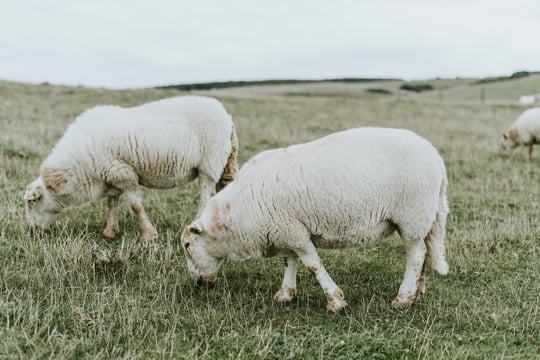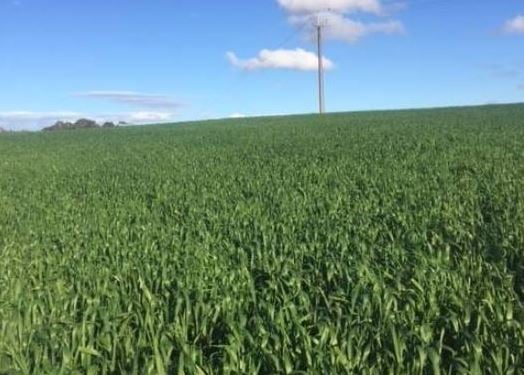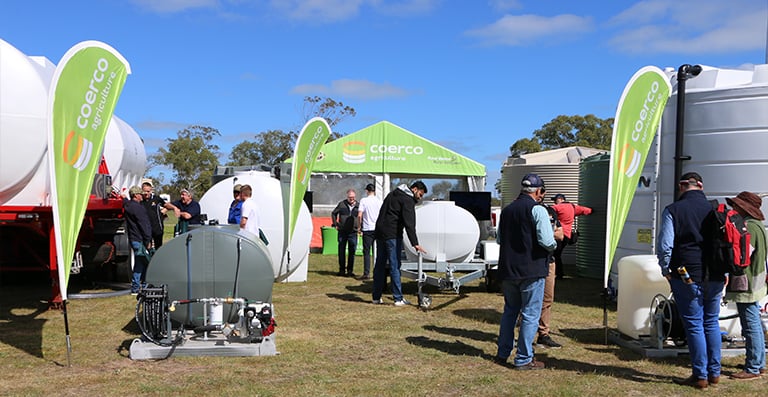The following are drought management best practices that help you make the best of naturally occurring moisture in your soil that'll help you save water and reap rewarding benefits.
1. Growing Drought-resistant Crops
2. Rotational Grazing
3. Utilising Cover Crops
4. Crop Rotation
5. Light or No Tillage
6. Using Mulch or Compost
7. Controlled Traffic Farming (CTF)
1. Growing Drought-resistant Crops
Drought raises the salinity level of the little water that’s left on Australia’s farm water sources. This is enough to prompt some farmers to take matters into their own hands by taking advantage of plants that naturally thrive on salty water. You can read more about this story here: Salinity crisis destroying Australia's farmland, but farmers hope to stop it.
For instance, pigface, a native succulent that is resistant to drought, is finding their way into high-end restaurants. As one farmer in the story very aptly puts it...
we’re not actually short of water we’ve got lots of it. It’s just too salty to do anything with. And if we can find a way to value-add salt water that’s what I want to see.
Other plants that thrive on salinity include saltbush shrubs, which have the capacity to restore groundwater tables to their natural state. As a rule, species of crops that are native to your region are likely resistant to drought. On the other hand, there are plants that, although not completely drought-tolerant, have low water requirements. One example of which is olives.
2. Rotational Grazing

Rotational grazing done right has multiple benefits. Not only does it allow for paddocks to rest when not being used, it also decreases water and nutrient runoff, increases your paddock’s water absorption and increases soil organic matter and fertility, overall improving the structure of your soil. A healthy amount of organic matter may also reduce the need for fertilisers – which, in turn, requires additional water.
Perennials use the paddock’s rest periods to replenish their root reserves. The result is forage that is more tolerant of dry spells, ensuring that your livestock have food to eat through long periods of drought.
For info on what type of livestock trough is best for rotational grazing, see here:
Best Livestock Water Trough for Intensive Rotational Cell Grazing?
3. Utilising Cover Crops

Cover crops aren’t planted for harvest. Rather, they’re planted to protect what would otherwise be bare soil. For example, heavy rains result in soil erosion. Cover crops prevent this from happening because their roots help to hold the soil together. With the problem of soil erosion eliminated, your soil’s water-holding capacity is improved.
Download this Free Report

Planting cover crops also reduces weeds and increases organic matter which results in healthier plants. It could potentially help you one day to become less reliant on fertilisers and save you on costs. One of the most amazing benefits of cover crops have to do with maintaining the quality of water not only within the soil itself, but also in groundwaters and surface waters.
Soil that is protected with cover crops helps to filter bad chemicals from fertilisers before run-off reaches any body of water. Without this protection, water quality from water sources declines, worsening an already dire situation.
You can read more about Australia’s water situation in these articles:
Water Crisis: Is Australia Running Out of Water?
5 Biggest Challenges Facing Australian Water
For news that hit a little bit closer to home, read:
Water crisis: Why WA farmers are running out of hope
4. Crop Rotation
Farmers that incorporate crop rotations into their farming do so for good reason. This is because crops have varying water requirements – that is, some need a lot of water, while some not so. When done properly, crop rotation helps retain moisture in the soil through planting break crops (e.g. canola and lupin), which allow succeeding crops to thrive because break crops are likely to leave more water in the soil that succeeding crops can benefit from.
5. Light or No Tillage
Otherwise known as conservation tillage, light tillage is a method of farming in which crop residue from the previous season is intentionally left in the field. This not only saves fuel by enabling you to spend less time during field operations, it also increases your soil’s resiliency in conjunction with other drought management best practices like incorporating cover crops and crop rotation.
Here’s why: Like cover crops, crop residue protects the soil underneath. By leaving residue - such as wheat stubbles - through light or zero tilling, water runoff and soil erosion is greatly reduced. Infiltration increases, and soil fertility improves resulting in an increase in crop yields.
6. Using Mulch or Compost
Drought spells high evaporation rates, but mulch and/or compost applied as a protective barrier on top of soil helps it to resist evaporation and maintain its water-holding capacity. Some types of mulch even suppress weeds, too.
7. Controlled Traffic Farming (CTF)
CTF is a farming approach that reduces tire traffic, resulting in soil that is soft, sponge-like and more able to retain water for your crops to access. This is done by having a designated zone for tractors’ wheel tracks so as not to disturb the crop zone. Wheel tracks and crop zone are permanently separated.
Controlled traffic farming solves the problem of soil compaction. Soft, spongy soil holds water and nutrients better for crops, something that is difficult to achieve with compacted soil.
In conjunction with no till farming or light tillage, CTF could help you leverage soil moisture level while reducing your fuel consumption by up to 50% less resulting in an increased bottom line.
The points in this article may be “indirect” ways to save water, but they save you precious volumes of water nonetheless.
The bottom line: Healthy soil is better able to withstand heavy downpours and retain water more efficiently during times of drought. Taking advantage of your soil’s ability to hold water and protect water sources today is key to mitigating damage – rain or shine.
Bonus Item
Capturing and Storing Water

It can’t be denied: without water, our actions are limited. Possibilities are left unexplored and goals fail to materialise.
To hit your aim, preparation is a potent tool. With Australia’s ongoing water crisis, it’s important to have a means to store water or catch rain when the time is ripe. More importantly, having the proper vessel in which to store water in can get you far.









What do you think about this post?
Comments